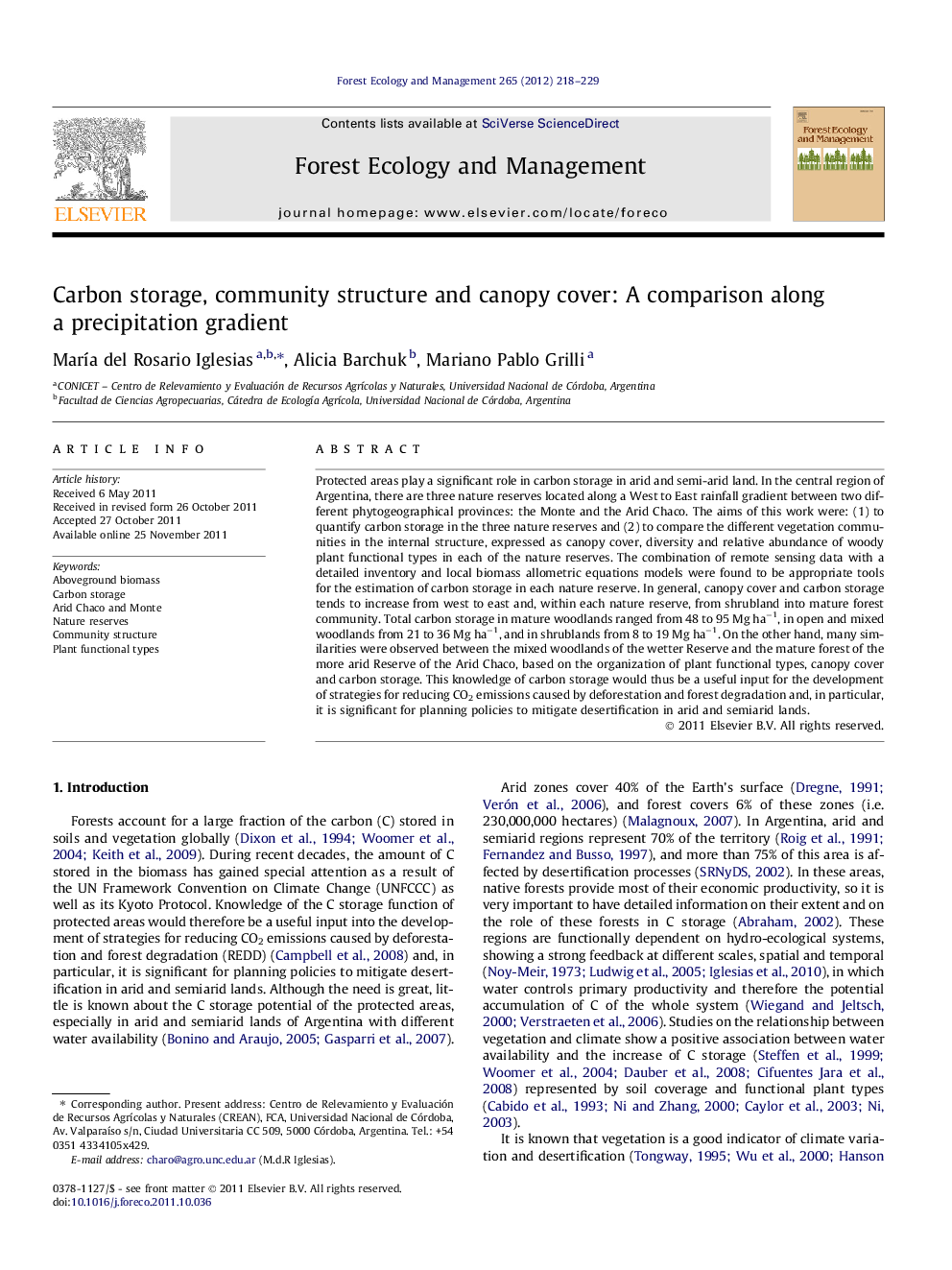| Article ID | Journal | Published Year | Pages | File Type |
|---|---|---|---|---|
| 87575 | Forest Ecology and Management | 2012 | 12 Pages |
Protected areas play a significant role in carbon storage in arid and semi-arid land. In the central region of Argentina, there are three nature reserves located along a West to East rainfall gradient between two different phytogeographical provinces: the Monte and the Arid Chaco. The aims of this work were: (1) to quantify carbon storage in the three nature reserves and (2) to compare the different vegetation communities in the internal structure, expressed as canopy cover, diversity and relative abundance of woody plant functional types in each of the nature reserves. The combination of remote sensing data with a detailed inventory and local biomass allometric equations models were found to be appropriate tools for the estimation of carbon storage in each nature reserve. In general, canopy cover and carbon storage tends to increase from west to east and, within each nature reserve, from shrubland into mature forest community. Total carbon storage in mature woodlands ranged from 48 to 95 Mg ha−1, in open and mixed woodlands from 21 to 36 Mg ha−1, and in shrublands from 8 to 19 Mg ha−1. On the other hand, many similarities were observed between the mixed woodlands of the wetter Reserve and the mature forest of the more arid Reserve of the Arid Chaco, based on the organization of plant functional types, canopy cover and carbon storage. This knowledge of carbon storage would thus be a useful input for the development of strategies for reducing CO2 emissions caused by deforestation and forest degradation and, in particular, it is significant for planning policies to mitigate desertification in arid and semiarid lands.
► Land cover and carbon storage increased according to the increment of the rainfall. ► Total carbon storage ranged from 8 to 95 Mg ha−1 in three arid and semiarid reserves. ► In reserves, land cover and carbon storage increased from shrubland into forest. ► Reserves had differences and similarities in plant functional types composition.
